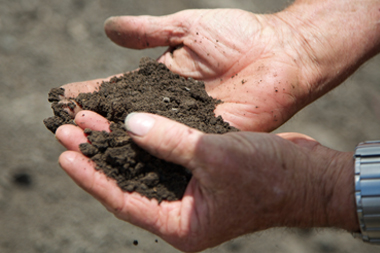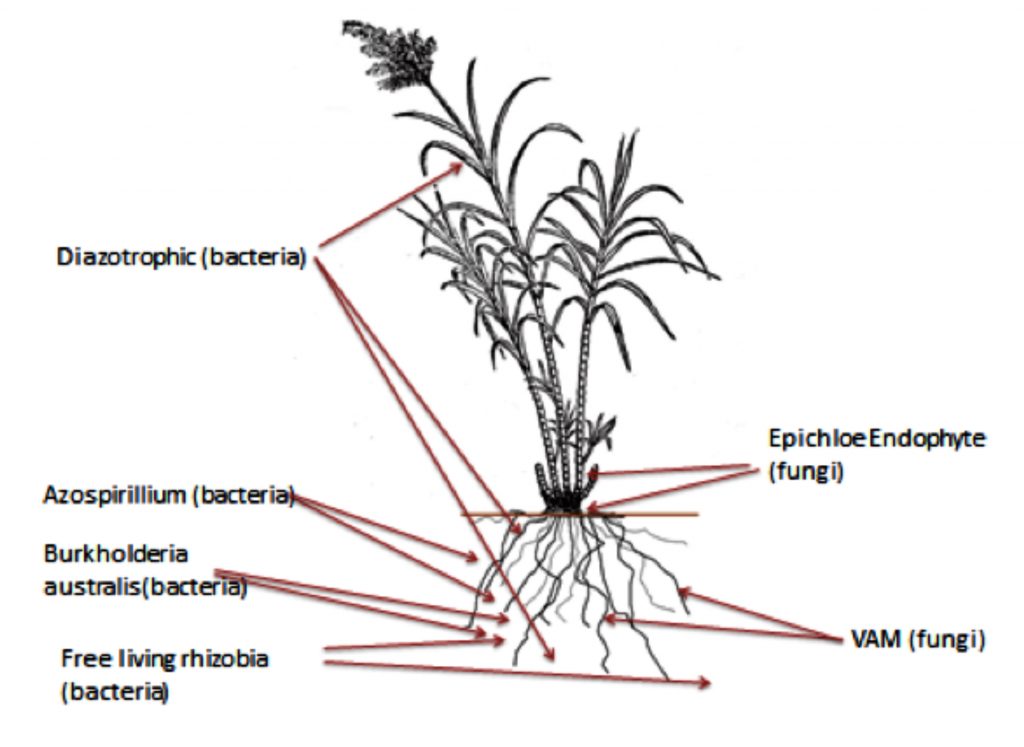 – Article provided by Rob Eccles, Sustainable Agriculture Manager, Catchment Solutions
– Article provided by Rob Eccles, Sustainable Agriculture Manager, Catchment Solutions
Is there no good microbe other than a dead microbe? Certainly most of our experiences and taught behaviours of the last century would lead to that belief. For good reason we do things like wash our hands and are prescribed antibiotics. None of us are alive now that know any different.
However, in agriculture it does not always hold true that all microbes do harm.
It could be said in the big picture sense; that research is now merely refining the discoveries made previously in pesticides, fertiliser and conventional plant breeding. Mankind has already achieved the simple things and made the major break throughs in these fields. Many are now saying the next “green revolution” increments will come from the use of beneficial microbes.
This is not such a big step as microbes are already in our daily lives. We eat bread, cheese and yogurt made with microbes. We drink alcoholic beverages made with microbes. For the last 50 years we have been coating legume seed with species specific strains of rhizobia bacteria to efficiently fix nitrogen into our crops and soil. We swallow probiotics to inoculate our digestive tracts with beneficial microbes to improve our health. Finally, many of our antibiotics actually are made by microbes.
Science, the process of systematic investigation, is the best invention mankind has ever made. I am disappointed how the poor use of science by many pushing microbial products has actually set back wide industry adoption by 10 to 20 years. This has occurred because it is an unregulated market not requiring the registration of products like agrichemicals and fertilisers. There are some poor products and salesman with inadequate knowledge and understanding out there. Merely mentioning the topic commonly leads to snickers and accusation of quackery by most in the industry be they scientists, agronomists, farmers, rural resellers or even the general public. This has lead to the poor investments by research bodies and extension organisations.
I believe we will not feed the growing world population for much longer without them. The cane industry will not recover from its decline in yield without their reintroduction. I say reintroduction because these are microbial organisms that have always lived beside and within wild sugarcane plants and their ancestors over the last 10’s and 100’s of millions of years. Except for modern agricultural practices and the necessity of a highly effective quarantine system on imported breeding lines our sugarcane plants have never lived without them before.
If sugarcane is like the other grasses studied such as ryegrass, tall fescue and cereals its health and productivity can be increased by identifying and inoculating these microbes back. For this reason in 2014: I instigated the meeting and collaboration of our SRA and New Zealand’s AgResearch into working together in finding these beneficial organisms and discovering what they do and how to restore them back into commercial sugarcane.
We have now made this into a funding application. The literature review to support the application has uncovered a significant number of published research papers identifying many beneficiary organisms already known (see graphic below).

Noting all these organisms need scientific validation of their suspected benefits, here is a quick description of what they do:
Diazotrophic (bacteria): These live on and in leaves, in roots and in the rhizosphere around roots. They fix nitrogen and offer some disease protection. A non-host species specific commercial line was released in 2009.
Azospirillium (bacteria): Live in the rhizosphere around roots. They fix nitrogen and often need a third organism to be present for them to function. Strains are now ready for commercialisation.
Burkholderia australis (bacteria): A nitrogen fixer.
Free living rhizobia (bacteria): A nitrogen fixer. Already present in our sugarcane fields. Research is needed to improve their effectiveness.
VAM (Fungus): Short for vesicular arbuscular mycorrihiza, this fungi lives inside and outside of roots. It networks cane plants between themselves and other plants. Assists the plant by improving nutrient uptake, offers some pest and disease protection and encourages other beneficial microbes. It is being commercialised now.
Epichloe Endophyte (fungi): This is very species specific. Fungal species that were compatible to ryegrass and tall fescue were reintroduced commercially during the 1990’s and now over $30 billion dollars of agricultural production worldwide use them annually. Cereals types are near release. These fungi are only suspected to be present in wild sugarcane species. These can live only inside their host. In other species they assist the plant in repelling pests, disease, improve plant’s tolerance to drought and heat stress plus improve tillering and biomass.
There are likely to be thousands of yet to be discovered organisms available in the wild cane species in their native environments. Restoring them into or beside our sugarcane plants could offer many benefits.